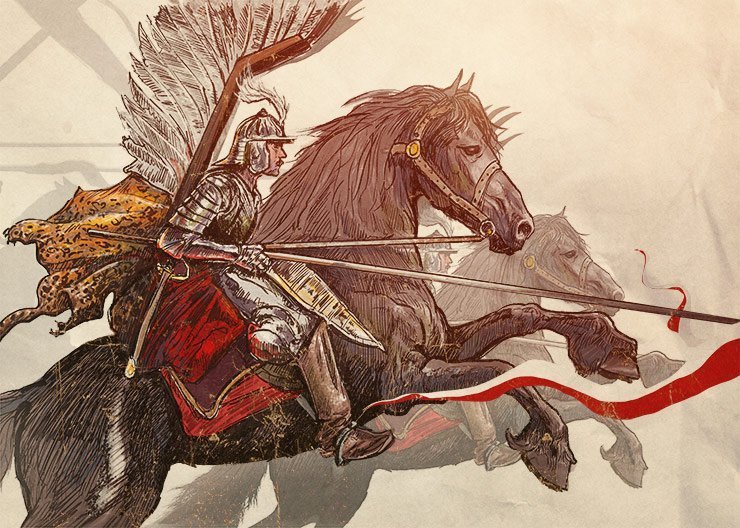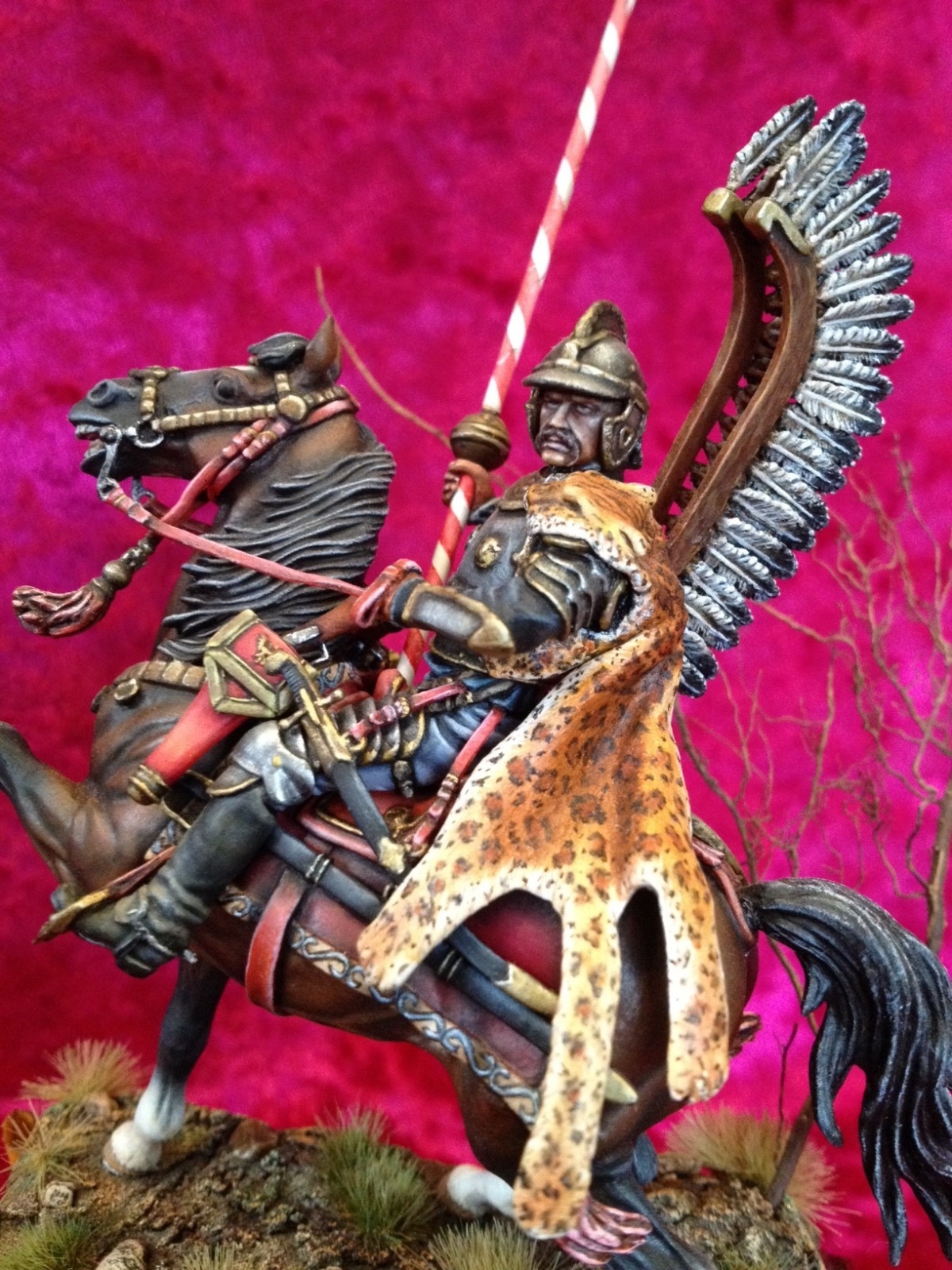The Miniature Mayhem Winged Hussars, Vienna 1683
With a loud cry "Mother of God!", or "Jesus Mary!" The Winged Hussars hammered into the ranks of the enemy. Usually, the attack caused complete destruction of the opponent's forces,. (12.09.1683) - Hussars's charge of Polish king Jan III Sobieski broke the siege of Vienna and forced the Turkish army to retreat. In.

The Enduring Legend of the Winged Hussars From Defeated Exiles to Europe's Avengers SOFREP
The Winged Hussars launched a devastating charge against the enemy, ending the battle in the decisive victory of the Polish-Lithuanian forces. Hussar armour and equipment of about 1640. (Polish Army Museum, Warsaw)
The Recoiling Knight and the Surrounded Spear 1683 Polish Winged Hussars Pt.II
The Polish Winged Hussars epitomized the shock cavalry arm of the Polish-Lithuanian Commonwealth between the 16th and 18th centuries.

1683 Polish Cavalry at the Siege of Vienna Polish hussars, Winged hussars, History
Battle of Vienna The Battle of Vienna [a] took place at Kahlenberg Mountain near Vienna on 12 September 1683 [2] after the city had been besieged by the Ottoman Empire for two months.

The Battle of Vienna took place at Kahlenberg Mountain near Vienna on 12 September 1683 after
His army will launch the largest cavalry charge in history on the plains outside Vienna, spearheaded by his famous heavy cavalry - the Winged Hussars. Ever since it had captured Constantinople in 1453, the Ottoman Empire had enjoyed a nearly unbroken string of victories.

The Battle of Vienna (1683) Sabaton Official Website
The Winged Hussars (known also as the Polish Hussars) were a type of shock cavalry used by the Polish-Lithuanian Commonwealth. The Winged Hussars were formed during the 16 th century and were used until the 18 th century when they became obsolete as a result of the advances in military technology.

Pin on Inne
Some 20,000 horsemen, including 3,000… 'winged hussars' swept down from the hills." ('A History of War in 100 Battles' by Richard Overy) Sobieski himself led the charge at the head of his 'winged hussars'. The charge broke the enemy lines and proved to be the final blow for the already exhausted and demoralised Ottoman troops.

Polish Hussars 1683 Winged hussars, Hussar, Polish hussars
6.3K Share 461K views 8 months ago #military #documentary #history 1683 Ottoman Turkey attacked the Holy Roman Empire and besieged Vienna. The Western world was forced to unite against a powerful.
The Recoiling Knight and the Surrounded Spear 1683 Polish The Winged Hussars
The Battle of Kahlenberg, 1683 by Frans Geffels. Polish horsemen descend upon the Ottoman forces besieging Vienna. The Janissaries were not called out of the trenches until it was too late. Social Sciences How the Siege of Vienna Changed the Course of History The fate of Europe hung in the balance when the Ottoman army besieged Vienna in 1683.

POLISH WINGED HUSSAR , VIENNA 1683 by mehdi 'infinito1885' askeur · Putty&Paint
Ready to shop and save? Explore amazing deals on the Temu App. Free shipping & return. Discover unbeatable deals and discounts on the Temu App. Download Now & Save Big!

Battle of Vienna 1683 When the Winged Hussars Arrived YouTube
Polish winged hussars. Original hussars were light cavalry.. He was fifty-one years old in 1683, though already ailing too often, and far too fat," so I guess they could lean either way regarding the (sub-)question of what main ingredient may have determined the battle's outcome
Completed Critique Polish Winged Hussar 1683 Miniatures
Discover the Heroic Legacy of King Jan III Sobieski and the Legendary Winged Hussars in the Battle of Vienna | A Tale of Valor, Unity, and Europe's Indomitable Spirit. 984 N. Milwaukee Ave, Chicago, IL | (773) 384-3352 | Tuesdays, Thursdays, Saturdays, & Sundays, 11AM-4PM. 1683, history bore witness to a moment of extraordinary.

Battle of Vienna, 1683 Winged hussars, Polish winged hussars, Hussar
The Polish hussars ( / həˈzɑːrs /; Polish: husaria [xuˈsarja] ), [a] alternatively known as the winged hussars, were a heavy cavalry formation active in Poland and in the Polish-Lithuanian Commonwealth from 1503 to 1702. Their epithet is derived from large rear wings, which were intended to demoralize the enemy during a charge.

Charge of the Polish Winged Hussars Ancient History, Art History, Battle Of Vienna, Spanish War
John III Sobieski Merzifonlu Kara Mustafa Paşa Siege of Vienna, (July 17-September 12, 1683), expedition by the Ottomans against the Habsburg Holy Roman emperor Leopold I that resulted in their defeat by a combined force led by John III Sobieski of Poland.

Wallpaper history, 1612, The time of troubles, Polish winged hussars images for desktop, section
One of the winged hussars' most infamous battles occurred during the 1683-99 Polish-Ottoman War. The Battle of Hodów in 1694 should have decimated the Polish force of 400 men (100 hussars and 300 Towarzysz pancerny), who were met by 40,000 Tatar soldiers.

White Eagle and Gold Crown Исторические картины, Всадники, Средневековый рыцарь
But back to Vienna in September of 1683, which was under siege by Grand Vizier Kara Mustafa Pasha and his army of over 140,000. That number dwarfs what remained of the Christian army, which was losing the battle for Vienna.. Note that the horsemen re-enacting the winged hussar charge are doing so down a nicely groomed hill—a.